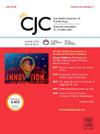运动的剂量和类型如何影响健康人的急性心血管功能?
IF 5.8
2区 医学
Q1 CARDIAC & CARDIOVASCULAR SYSTEMS
引用次数: 0
摘要
在有氧运动中,心血管系统的任务是通过肌肉血流将氧气输送到活跃的骨骼肌,同时调节平均动脉血压。有氧运动对急性心血管功能的影响可能受到运动剂量和运动类型的调节。剧烈地,剂量是运动强度和时间的产物,而运动类型可以指常见的有氧运动,如骑自行车,跑步,游泳或划船。每一种方式都是独特的,因为它们的完成介质以及相对于心脏水平的活动肌肉量的位置对血流的影响。本综述的目的是探讨急性运动剂量如何影响健康个体中不同有氧运动方式的心血管功能。在所有模式下,所有剂量均可短暂降低左、右心室收缩和舒张功能以及宏观和微血管功能。然而,准确量化和比较文献中的运动剂量是具有挑战性的,因为运动处方的方法学差异和不同运动方式对心血管的要求不同。此外,心血管漂移与年龄变化的潜在混淆影响,与生物性别和心血管测量时间相关的队列组成进一步使解释复杂化。未来的工作应侧重于根据特定的生理阈值来制定运动强度处方,以提供可比较的剂量。这种方法可能有助于使生理刺激标准化,并允许客观评估与信心进行比较。本文章由计算机程序翻译,如有差异,请以英文原文为准。

How Does the Dose and Type of Exercise Impact Acute Cardiovascular Function in Healthy Individuals?
During aerobic exercise, the cardiovascular system is tasked with delivering oxygen to active skeletal muscle via muscle blood flow while regulating mean arterial blood pressure. The impact of aerobic exercise on acute cardiovascular function may be modulated by the dose and type of exercise. Acutely, dose is the product of exercise intensity and time, whereas exercise type may refer to common aerobic modalities like cycling, running, swimming, or rowing. Each modality is unique for its medium of completion as well as the implications on blood flow arising from the position of active muscle mass relative to heart level. The purpose of this review was to address how an acute exercise dose influences cardiovascular function between prominent aerobic exercise modalities in healthy individuals. Across all modalities, all doses may transiently reduce both left and right ventricular systolic and diastolic function as well as both macro- and microvascular function. However, accurately quantifying and comparing exercise dose across the literature is challenging due to methodologic differences in exercise prescription and the cardiovascular demands imposed by differing modalities of exercise. Furthermore, the potential confounding influence of cardiovascular drift alongside variations in age, the composition of cohorts with respect to biological sex, and timing of cardiovascular measures further complicates interpretation. Future work should focus on exercise intensity prescription according to modality-specific physiologic thresholds to provide comparable doses. This approach may serve to standardize the physiologic stimulus and allow for objective assessments to be compared with confidence.
求助全文
通过发布文献求助,成功后即可免费获取论文全文。
去求助
来源期刊

Canadian Journal of Cardiology
医学-心血管系统
CiteScore
9.20
自引率
8.10%
发文量
546
审稿时长
32 days
期刊介绍:
The Canadian Journal of Cardiology (CJC) is the official journal of the Canadian Cardiovascular Society (CCS). The CJC is a vehicle for the international dissemination of new knowledge in cardiology and cardiovascular science, particularly serving as the major venue for Canadian cardiovascular medicine.
 求助内容:
求助内容: 应助结果提醒方式:
应助结果提醒方式:


